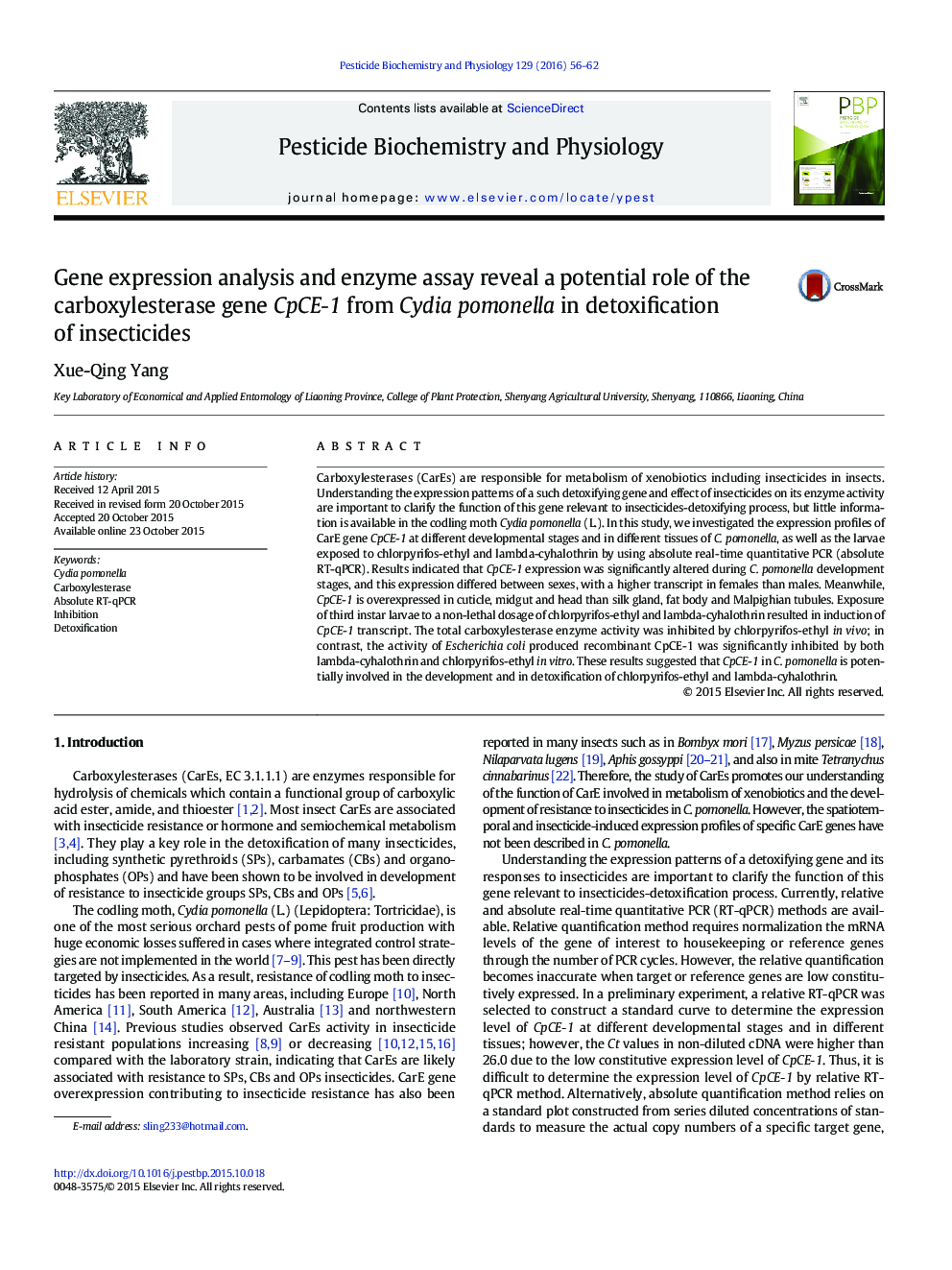| Article ID | Journal | Published Year | Pages | File Type |
|---|---|---|---|---|
| 2008971 | Pesticide Biochemistry and Physiology | 2016 | 7 Pages |
•The CpCE-1 expression was significantly altered during Cydia pomonella development stages.•The CpCE-1 mRNA was increased in females over males, and was primarily expressed in cuticle, midgut and head.•Lambda-cyhalothrin and chlorpyrifos-ethyl induced CpCE-1 transcript, but inhibited total carboxylesterase activity in vivo.•The activity of recombinant CpCE-1 protein was significantly inhibited by lambda-cyhalothrin and chlorpyrifos-ethyl in vitro.
Carboxylesterases (CarEs) are responsible for metabolism of xenobiotics including insecticides in insects. Understanding the expression patterns of a such detoxifying gene and effect of insecticides on its enzyme activity are important to clarify the function of this gene relevant to insecticides-detoxifying process, but little information is available in the codling moth Cydia pomonella (L.). In this study, we investigated the expression profiles of CarE gene CpCE-1 at different developmental stages and in different tissues of C. pomonella, as well as the larvae exposed to chlorpyrifos-ethyl and lambda-cyhalothrin by using absolute real-time quantitative PCR (absolute RT-qPCR). Results indicated that CpCE-1 expression was significantly altered during C. pomonella development stages, and this expression differed between sexes, with a higher transcript in females than males. Meanwhile, CpCE-1 is overexpressed in cuticle, midgut and head than silk gland, fat body and Malpighian tubules. Exposure of third instar larvae to a non-lethal dosage of chlorpyrifos-ethyl and lambda-cyhalothrin resulted in induction of CpCE-1 transcript. The total carboxylesterase enzyme activity was inhibited by chlorpyrifos-ethyl in vivo; in contrast, the activity of Escherichia coli produced recombinant CpCE-1 was significantly inhibited by both lambda-cyhalothrin and chlorpyrifos-ethyl in vitro. These results suggested that CpCE-1 in C. pomonella is potentially involved in the development and in detoxification of chlorpyrifos-ethyl and lambda-cyhalothrin.
Graphical abstractFigure optionsDownload full-size imageDownload as PowerPoint slide
